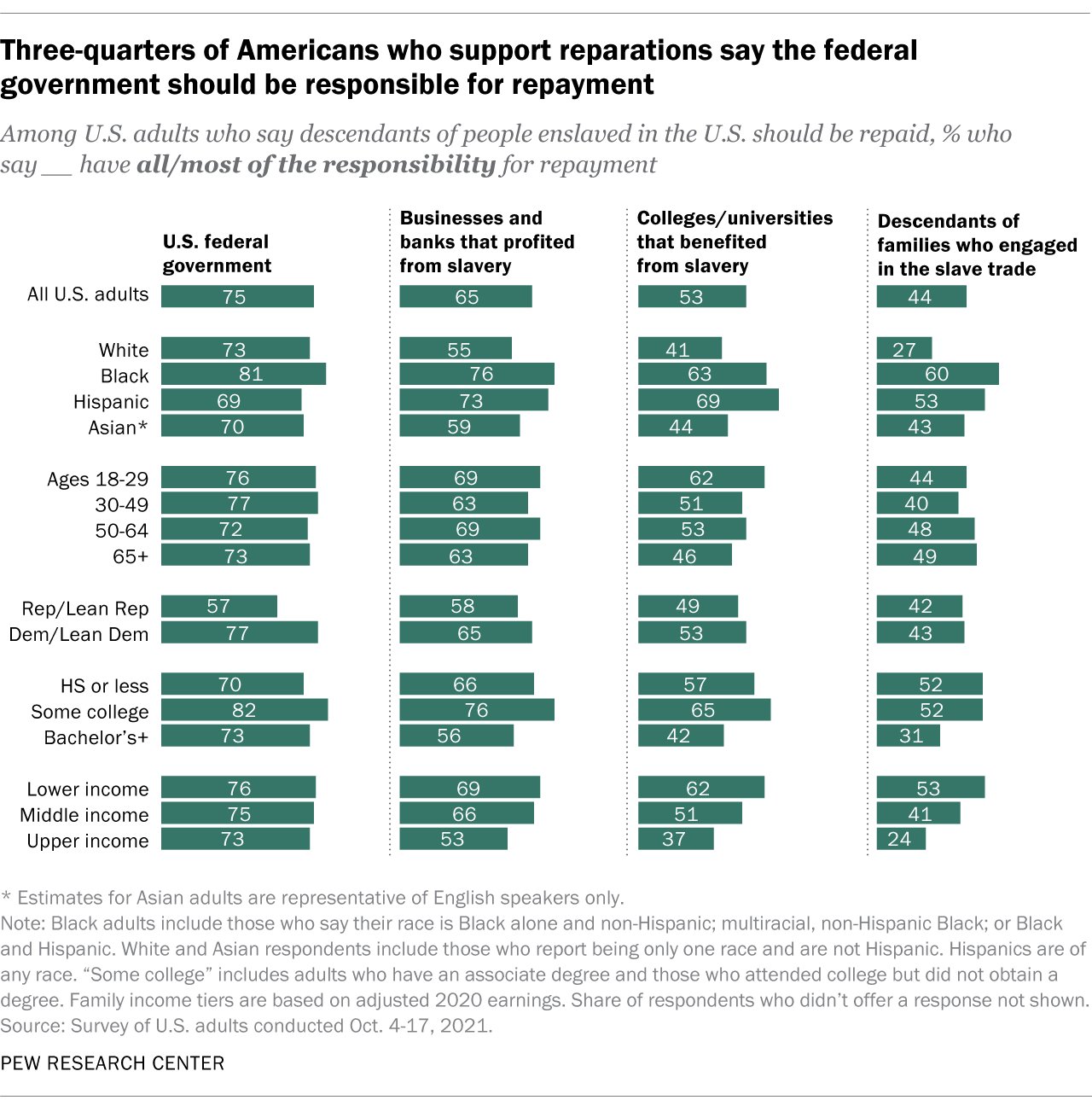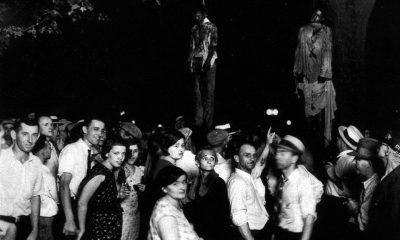Illinois
The Complex Landscape Of Reparations And Racism In America

Reparations And Racism In America:
In a nation with a long history of fighting racism, reparations for Black Americans have ignited passionate debates. The essay explores three key reparations and racism concerns in the US.
For years, reparations for Black American slavery have been disputed. Evanston, Illinois, was the first US city to implement a reparations plan for past injustices against Black inhabitants.
California established the nation’s first state-level reparations task group, highlighting the growing interest in addressing this delicate issue throughout government. Harvard University gave $100 million to its “Legacy of Slavery” fund to explore its historical ties to slavery, in addition to municipal and governmental activities.
Racism And Public Opinion: A Deep Divide
A 2021 Pew Research Center research found Americans dubious about reparations. Only a third of US people support reparations for descendants of slaves, either land or money. Most responders (68%), oppose reparations.
Responses by race and ethnicity show the most significant divide in popular opinion. Only 18% of White Americans support reparations, whereas 77% of Black adults do. These significant contrasts demonstrate the strong connection between reparations and the nation’s fight against racism.
Political Affiliation, Generational Perspectives, And Reparations
Political affiliation and generational demographics influence reparations opinions. Democratic-leaning independents and Democrats are divided. About 48% favor reparations, while 49% oppose it. Reparations are opposed by 91% of Republicans and GOP-leaning people, while 8% support them.
Age affects reparations views. Only 18% of seniors 65 and older favor the idea, while 45% of under-30s do. Political ideologies and generational divisions complicate the discussion.
These gaps continue as America debates reparations and racism, demonstrating the complicated processes that underlie this passionate and nuanced argument. The reparations and racism debate in the US is complex, and this essay is the first in a series that will explore each of these issues.
Historical Context: The Roots Of Reparations And Ongoing Racial Injustice
Reparations must be considered from the perspective of US racial injustice. Black Americans suffered centuries of servitude, discrimination, and institutional racism. Reparations address historical wrongs and present racial inequity.
Reparations acknowledge Black communities’ past tragedy. It addresses socioeconomic disadvantages, educational gaps, and the cycle of poverty that disproportionately affects Black Americans. Reparations are needed to address Black people’s accumulated injustices, as shown by history.
Understanding the need for reparations requires acknowledging slavery’s lasting impacts. These effects cause inequality in education, employment, healthcare, and criminal justice. The reparations discussion emphasizes the need to correct these disparities and create a fairer society.
Read Also: University Of Illinois Professor’s New Book Explores Racialized Design And Anti-racism
The Role Of Institutions: Reparations Responsibility And Accountability
Responsibility for reparations is a crucial reparations issue. Who is responsible for addressing Black American historical injustice? Many advocates feel the US federal government should handle reparations. The government enabled slavery and decades of racial prejudice. Thus, it bears this duty.
Many proponents believe businesses and banks that benefitted from slavery should pay reparations. They helped sustain slavery economically. Given their links to slavery, colleges, and institutions that benefitted from it are somewhat responsible.
Additionally, descendants of slave traders are held accountable. They benefitted from selling and enslaving people. This complicated accountability and responsibility chain shows the reparations debate’s complexity.
Forms Of Repayment: Navigating The Path To Redress
Reparations discussions go beyond who should pay and include the best methods. Educational scholarships are the most popular reparations reimbursement. These scholarships redress previous educational inequities and give opportunities for future Black Americans.
Business startup or improvement funding is another popular method of payback. It seeks to reverse historical injustice’s economic effects via economic empowerment.
Financial aid for purchasing or upgrading a house is also considered a strategy to reduce homeownership discrepancies, which have lasting economic effects. While many reparations supporters advocate cash payments, they are the least preferred choice.
The repayment methods demonstrate the broad approach needed to remedy past injustice and continuing racial inequities. This component of the reparations argument highlights the difficulties of solving deep-rooted issues.
The Influence Of Political Affiliation: A Spectrum Of Perspectives
The reparations discussion shows stark political divisions. Nearly half (48%) of Democrats and Democratic-leaning independents favor reparations, while 49% reject it. This split shows the issue’s intricacy and the Democratic Party’s diversity. Republican and GOP-leaning voters had an entirely different view.
Reparations are opposed by 91% of Republicans, while 8% favor them. This significant disparity shows the ideological divide between the two main political parties and makes compromise on this controversial issue harder. The reparations discussion is further nuanced by the political spectrum, underlining that it is a political and partisan issue.
Generational Dynamics: Shifting Perceptions On Reparations
Generational viewpoints also shape reparations attitudes. Reparations are supported by 45% of under-30s. Their views reflect a rising awareness of historical injustices and a desire to right them. Only 18% of 65-year-olds favor reparations.
As younger generations cope with past prejudice and seek solutions that reflect modern values, the discourse is changing. Generational dynamics emphasize the need for open conversation across age groups and bridging viewpoints to confront reparations together.
Hope And Uncertainty: The Future Of Reparations
Many reparations advocates like the idea, but they doubt it will happen in their lifetime. Most US people who favor reparations (75%) doubt they will occur in their lifetimes. The outlook is just 10% positive.
In particular, demographic inequalities occur in respondents’ lifetime reparations expectations. Hispanic (21%) and Asian American (13%) supporters are more optimistic about reparations in their lifetimes than White (6%) and Black (7%). Supporters aged 18–49 (12%) are more hopeful than those 50 and older (5%).
Hope and doubt surround the reparations’ future. This nuanced view highlights the continued problems of creating a unified vision to solve past racial injustices and racism in the US.

-

 States2 weeks ago
States2 weeks agoPearlie Golden 93-Year-Old Black Woman Shot By Texas Cop
-

 States2 weeks ago
States2 weeks agoTragedy Unveils Racial Tensions Tarika Wilson Story
-

 States2 weeks ago
States2 weeks agoLayers Of Racial Tension The Mario Woods Tragedy And San Francisco Path To Justice
-

 States2 weeks ago
States2 weeks agoLynching Of Thomas Shipp Tragedy Of Racism Echoes Through History
-

 States2 weeks ago
States2 weeks agoThe Killing Of Terence Crutcher And The Fight For Racial Justice

















You must be logged in to post a comment Login